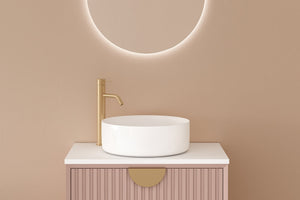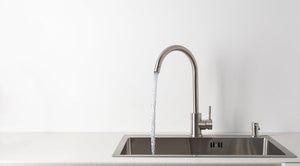The Best Olympic Barbells for Home and Commercial Gyms

Choosing the right Olympic barbell can be a game-changer for your fitness journey. Whether you're a home gym enthusiast or a commercial gym owner, the right barbell can elevate your weightlifting experience.
But with so many options on the market, how do you choose the best Olympic barbell? What features should you look for? And what makes an Olympic barbell stand out from standard barbells?
This guide will answer all these questions and more. We'll delve into the unique features of Olympic barbells, discuss key considerations when buying one, and review some of the best options available.
By the end of this article, you'll be well-equipped to make an informed decision. You'll know exactly what to look for in an Olympic barbell that suits your needs and preferences.
So, let's dive in and explore the world of Olympic barbells. Your journey to better weightlifting starts here.
Explore our full range of Olympic barbells to find the right fit for your training needs
Understanding Olympic Barbells
Olympic barbells are fundamental pieces of weightlifting equipment, designed specifically for intense training and competitions. These barbells differ significantly from their standard counterparts.
To start, Olympic barbells are built to handle heavy weights. They are made for serious lifters who need the best possible performance. The durability of Olympic barbells is unmatched by standard types.
Key Features of Olympic Barbells:
- Diameter: Typically larger than standard barbells for a better grip.
- Sleeves: Rotating to reduce torque on wrists and allow smooth lifts.
- Knurling: Designed to provide a secure hold during intense workouts.
- Tensile Strength: High to prevent bending or breaking under heavy loads.
Overall, if you're serious about lifting, Olympic barbells are necessary. They not only ensure safety but also enhance your workout efficiency.
What Makes an Olympic Barbell Unique?
The uniqueness of Olympic barbells lies in their design and construction. They are engineered to meet specific weightlifting needs with precision.
These barbells feature rotating sleeves that reduce the wrist strain during lifts. This innovation helps maintain balance and reduces the risk of injury, enhancing workout safety. Additionally, their superior tensile strength allows them to handle tremendous weights without compromising integrity.
The Standard Dimensions and Weight of Olympic Barbells
Standardization is a crucial element of Olympic barbells. They typically weigh 20 kg for men and 15 kg for women. This weight consistency helps athletes train with the same equipment specifications seen in competitions.
Men's Olympic barbells are about 2.2 meters long, while women's are slightly shorter. Moreover, they have a larger sleeve diameter than standard barbells, making them compatible with Olympic weight plates. This compatibility ensures seamless and efficient lifting.
Key Features of Top Olympic Barbells
When selecting an Olympic barbell, certain features stand out. These features ensure top performance and safety. The barbell's tensile strength, for instance, is critical.
The knurling plays a key role in grip and comfort. It dictates how confident you feel handling heavy weights. Additionally, a barbell's whip affects lifts differently, enhancing various athletic performances.
Furthermore, bushings and bearings determine the barbell's spin efficiency. They impact your overall lifting experience. Also, consider the barbell coating as it affects durability and maintenance.
Tensile Strength and Durability
Tensile strength refers to a barbell’s ability to withstand force. It ensures that the bar won't snap under pressure. This strength is measured in PSI, or pounds per square inch.
High PSI ratings indicate superior durability. Durable barbells are less prone to bending or breaking. This makes them reliable for long-term usage, even under heavy workloads.
Knurling and Grip
Knurling provides the texture on the barbell to aid grip. The pattern you choose impacts your hold's firmness during lifts. A medium knurl pattern suits most lifters for general use.
Rougher knurling benefits powerlifters needing extra grip. Conversely, lighter knurling is suitable for practicing Olympic weightlifting techniques. Always try different textures to find what suits your needs best.
Whip and Flexibility
The barbell’s whip refers to its flexibility during lifts. Whip affects how the bar oscillates, beneficial in certain lifts like cleans and jerks. Flexible bars help generate momentum for explosive lifts.
On the other hand, powerlifters might prefer stiffer bars. Less flexibility provides stability during heavy squats and deadlifts. Thus, your choice depends on training style and lift types.
Bushings vs. Bearings
The type of rotating mechanism inside a barbell sleeve greatly influences your lifting experience. Bushings offer durability and a consistent spin for general training.
Bearings, however, provide a smoother, faster spin. They are preferred for Olympic lifts requiring quick, fluid motions. Choose bearings for high-speed lifts and bushings for everyday strength training.
Coating Options and Oxidation Resistance
Barbell coatings protect against rust and corrosion. Popular coatings include chrome, zinc, and cerakote. Chrome offers a sleek look but can be slick to grip.
Zinc provides moderate protection and a matte finish. Cerakote offers superior rust resistance and aesthetic customization. Selecting the right coating balances protection, grip comfort, and appearance.
Choosing the Right Olympic Barbell
Selecting the right Olympic barbell can seem daunting, but focusing on a few key aspects simplifies the process. Consider your specific needs and gym setup first. This helps narrow down choices significantly.
It's important to match the barbell to your fitness goals. Are you training for powerlifting or Olympic-style lifts? Both activities may require different equipment specifications for optimal performance.
Next, evaluate the space available for use and storage. Some barbells require more room for effective usage. Others may better suit compact spaces, especially in home gyms.
Lastly, budget is a significant factor in your selection. While high-quality barbells are often pricier, they offer long-term value. Consider them an investment in your fitness journey.
Men's vs. Women's Barbells
Men's and women's barbells differ in size and weight. Men's bars typically weigh 20 kg and are 28-29 mm in diameter. They are longer and sturdier, built for general and competitive lifting.
Women's barbells weigh 15 kg and have a thinner diameter, about 25 mm. This thinner design enhances grip for those with smaller hands. Also, they have less aggressive knurling, ideal for various training purposes.
Load Capacity and Collar System
The load capacity of a barbell is crucial for safety. It indicates the maximum weight a bar can handle without bending. Ensure the capacity matches your lifting potential and future goals.
Secure collar systems are essential for keeping weight plates in place. Sliding plates can disrupt balance and cause accidents. Choose collars that offer a reliable, firm hold during lifts for maximum safety.
Barbell Maintenance and Care
Proper maintenance extends the life of your barbell. Regular cleaning prevents rust and corrosion, preserving the coating. Wipe down your barbell after each use, paying attention to the knurling and sleeves.
Lubricate bushings or bearings as needed to maintain smooth rotations. Store your barbell off the floor to avoid unnecessary wear. Following these care tips ensures longevity and optimal performance.
Top-Rated Olympic Barbells for Every Setting
When it comes to selecting the best Olympic barbells, context matters. Each gym environment has distinct needs. Therefore, it’s essential to tailor your choice to your specific setting.
Home gyms often require more compact and versatile barbells. Look for options that balance quality and space efficiency. This ensures you make the most out of your available room.
Commercial gyms need durable, heavy-duty barbells to withstand constant use. They should cater to a wider range of lifters with varying skill levels and strength. Durability and user versatility are key factors here.
For both home and commercial gyms, specialty barbells stand out for specific training goals. These specialized options enhance targeted training and support advanced techniques. They can make all the difference in achieving particular lifting objectives.
Best for Home Gyms
In home gym settings, the flexibility and space-saving design of Olympic barbells are crucial. Bars that cater to multiple lifting styles prove most beneficial. Versatile weights and a medium knurling offer a wide usability range.
For instance, a hybrid Olympic bar with moderate whip is ideal. It offers adaptability for various workouts. High-quality coatings, like cerakote, add durability, helping the bar withstand sweat and moisture in limited ventilation spaces.
Look for bars that can easily be stored, either by rack or wall mount. This minimizes clutter in smaller workout areas while maintaining easy accessibility. It’s an economical way to maximize efficiency at home.
Best for Commercial Gyms
In commercial settings, the robustness and longevity of Olympic barbells cannot be overlooked. Bars with high tensile strength support consistent use. They handle constant loading and unloading from diverse clientele.
Commercial barbells should feature a strong coating to prevent rust, even under heavy usage. Stainless steel or hard chrome finish often serves best here. They provide a sleek look while maintaining their integrity.
Additionally, bars should have reliable bearings or bushings to ensure smooth rotation. This feature is vital during Olympic lifts, enhancing user experience. Commercial environments require equipment that holds up under high traffic and varied use.
Specialty Barbells for Powerlifting and Olympic Weightlifting
For specialized lifting, the design of Olympic barbells must match the intended use precisely. Powerlifting barbells are typically stiffer, supporting maximal load without excessive whip. This stability is vital for heavy squats and bench presses.
On the other hand, Olympic weightlifting bars feature more whip. This flexibility aids the lifter during complex, dynamic lifts like snatches and clean-and-jerks. They often have needle bearings for smoother spin.
Selecting the right specialty barbell impacts performance significantly. It supports lifters' growth by enhancing technique and ensuring safety. Investing in these specific tools leads to better training outcomes and personal bests.
Check out our selection of Olympic weight plates designed for durability and performance
Conclusion
Choosing the right Olympic barbell requires careful consideration of your goals, space, and budget. By understanding key features and reading reviews, you can make an informed purchase. A well-chosen barbell will enhance your training experience, supporting your journey toward strength and fitness. Make a decision that leads to success in every lift.
- Tags: Barbells Weight Plates




















